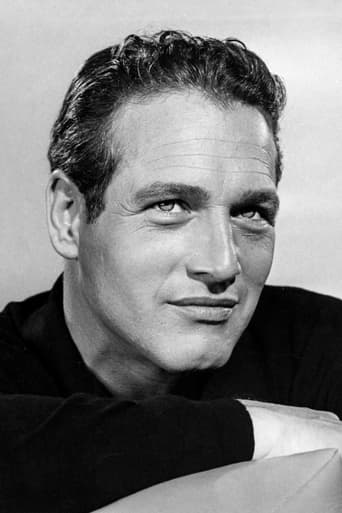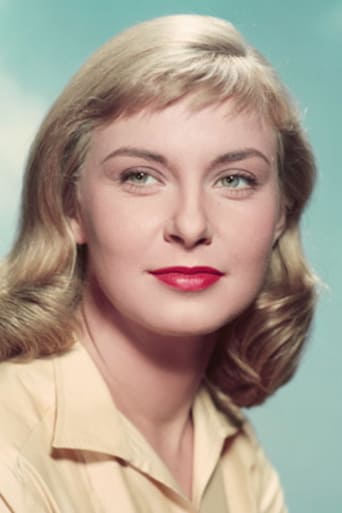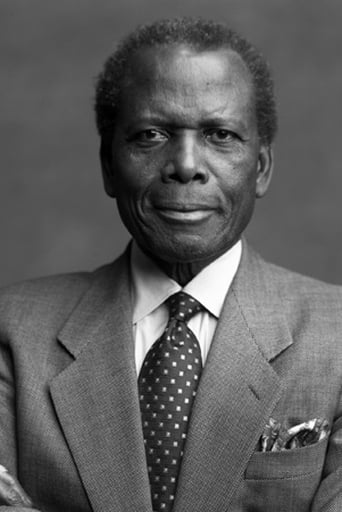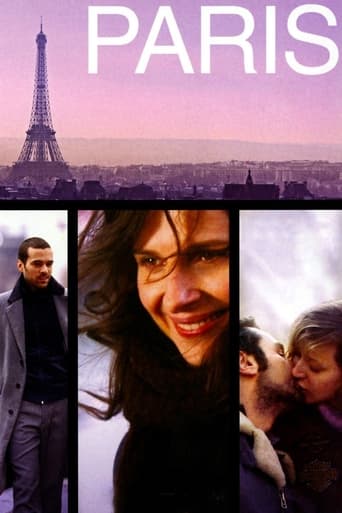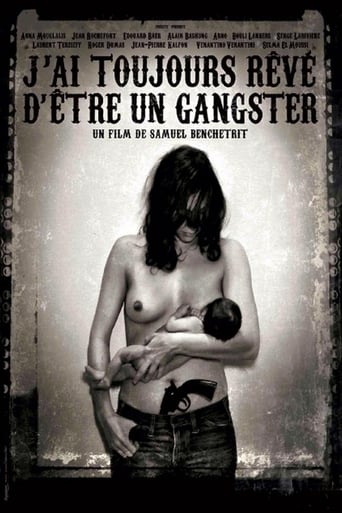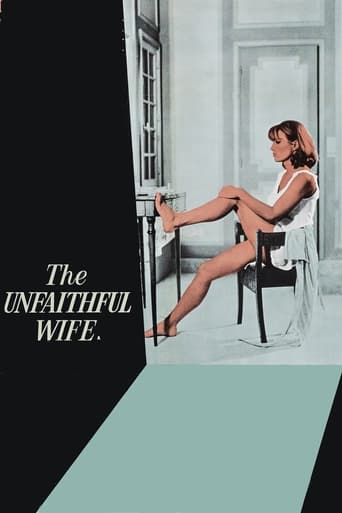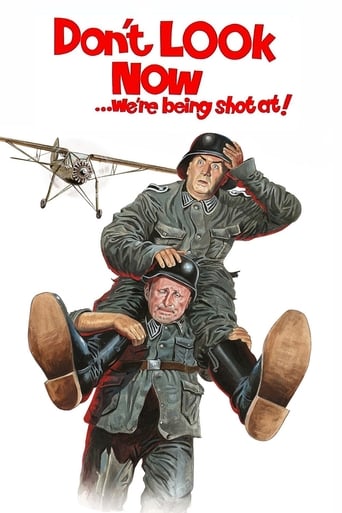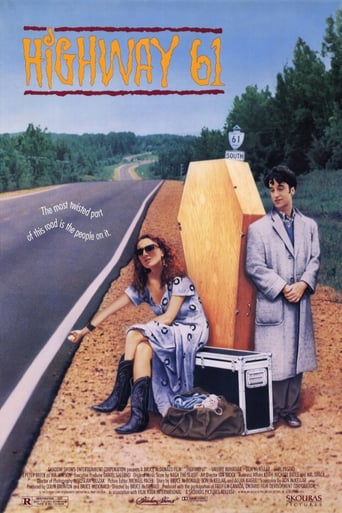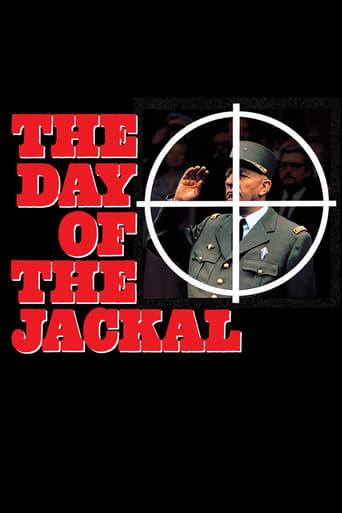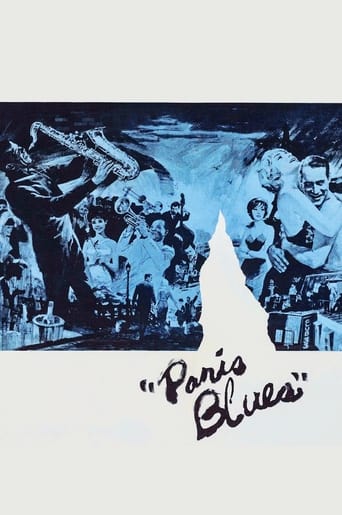
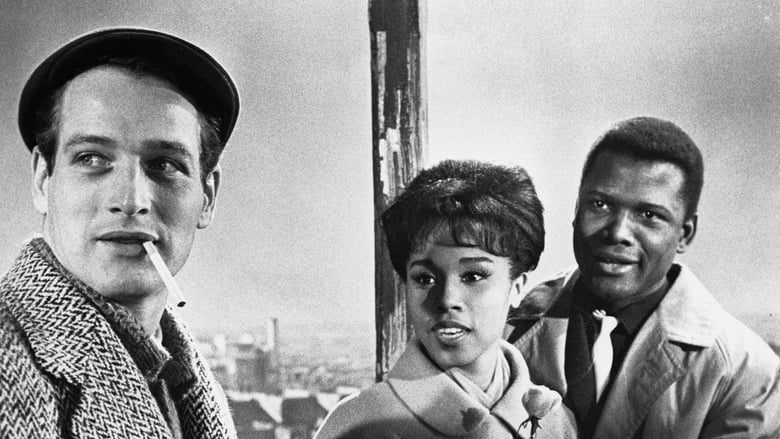
Paris Blues (1961)
During the 1960s, two American jazz musicians living in Paris meet and fall in love with two American tourist girls and must decide between music and love.
Watch Trailer
Cast
Similar titles
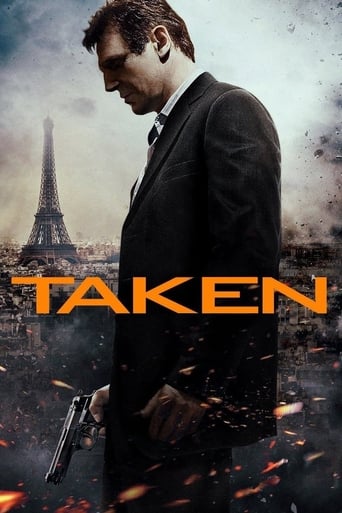
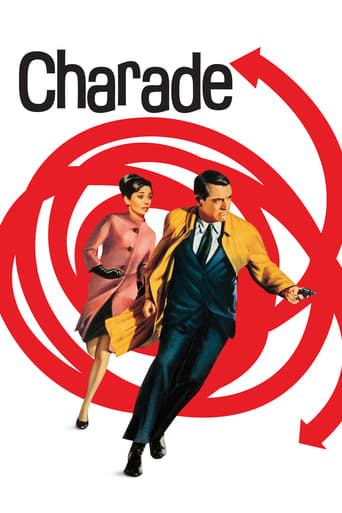
Reviews
Absolutely Fantastic
Pretty good movie overall. First half was nothing special but it got better as it went along.
Although I seem to have had higher expectations than I thought, the movie is super entertaining.
There are moments in this movie where the great movie it could've been peek out... They're fleeting, here, but they're worth savoring, and they happen often enough to make it worth your while.
Location-rich, jazz-inspired melodrama about a café band on the Left Bank of Paris led by two Americans: a white, moody trombone player and his only true friend, a black saxophonist who has deliberately blinded himself to the plight of minorities. Paul Newman and Sidney Poitier are well cast, but their scratchy friendship has a false-front (it never feels real or lived in); right at the beginning, the men get into a fight over their music, which confusingly flares up out of nowhere and dissipates in much the same fashion. The pair quickly take up with two female tourists (matched as if by skin color), but lovemaking and sight-seeing take a backseat to squabbles over their differences. Martin Ritt-directed soaper is not nearly as full of music as it is talk, which is a shame considering the dialogue is so banal it overwhelms the picture. The women's roles are particularly ineffective, with Joanne Woodward looking lost in an unplayable role and Diahann Carroll exasperating as a schoolteacher who seems to want to start a race war. Duke Ellington received an Oscar nomination for his score, fitting since the sounds (and also the sights, as photographed by the efficient Christian Matras) are really all the film has going for it. *1/2 from ****
I'll leave the criticism/review of this film to others. I didn't really follow the plot which is rare for me; instead, I was more interested in the music.Of course watching Poitier and Newman fake their way through the music performance sections was of interest. And they did manage to fake it with some success. You can see that Martin Ritt, the director, kept those shots to a minimum, especially when Louis Armstrong was in the house playing with them. Otherwise, too long of a shot of either Newman or Poitier playing would reveal their amateur ability.Armstrong was great in the later scene when his band "comes marching in" and he challenges the soloists in Newman's band to a playoff. And that scene was truly the best, both musically and otherwise in the film. The vitality and musical charm of that scene was great.One note about the storyline and the racial aspects that carried on between the characters, especially Poitier and Carroll, is important for several reasons. As others have said here, the Civil Rights movement in the US was surging ahead, so the significance of the story in the film rings true and is important.But no one seems to have mentioned the fact that Louis Armstrong was also, if not more than any other musician in mid-20th century America, an important victim of racial bias in the US during his career. Go listen to him sing "Black and Blue" and you'll get the idea. To see him here in Paris, where race was not a factor, only reinforces the historical rejection by many in America and the acceptance by many in Europe of jazz and African-Americans during this time.The title of this film, "Paris Blues" is more than just a comment about music.
Interesting drama with jazz interest (music by Duke Ellington – whose contribution even garnered an Oscar nod – and the appearance of Louis Armstrong) filmed on location (by Christian Matras, cinematographer for Jean Renoir, Max Ophuls and Luis Bunuel, no less).These two elements prove the film’s mainstay, offsetting the plot’s inherent heaviness (including the perennial struggle between Commerce and Art – popular American trombonist Paul Newman wants to branch out into composition – and its destructive impact on his relationship with tourist/divorcée-with-kids Joanne Woodward, racial intolerance – the reason behind Sidney Poitier’s relocation to Europe, which puts a strain on his affair with Woodward’s companion Diahann Carroll – and drug abuse, which is ruining the career of guitarist Serge Reggiani); two of the film’s best sequences are those in which Newman and Reggiani come across a junkie erratically strumming on his guitar in the marketplace – a man whom Reggiani previously idolized, and the eventual falling-out in public between the two over Reggiani’s continuing intake of drugs. Incidentally, it was amusing to note the epithet “introducing” before the latter’s name during the opening credits since he had already been well established in his native land for about 15 years (with even a couple of moderate profile English-speaking films in his resume')! I’d say that the film – Newman’s fourth with spouse Woodward and second with frequent director Ritt – is very underrated within the actor’s filmography and is also notable for being the sole collaboration between the late star and fellow Method actor Marlon Brando (this was co-produced by the latter’s company, Pennebaker). Similarly, Newman’s teaming with Poitier here would have ‘repercussions’ two years later when both found themselves competing for the Best Actor Oscar (though the former was the hands-down favorite for one of his best roles in Ritt’s own HUD [1963], it was the latter who emerged the winner with LILIES OF THE FIELD [1963]); this ironic turn-of-events would occur three more times throughout Newman’s long career: he appeared with David Niven in LADY L (1965) – the latter won for SEPARATE TABLES in 1958 when Newman was nominated for CAT ON A HOT TIN ROOF, he appeared with (and directed) Henry Fonda in SOMETIMES A GREAT NOTION (1971) – the latter won for ON GOLDEN POND in 1981 when Newman was nominated for ABSENCE OF MALICE (1981) and, finally, he appeared with Tom Hanks in ROAD TO PERDITION (2002) – the latter won for FORREST GUMP in 1994 when Newman was nominated for NOBODY’S FOOL!!
Having just reviewed Sidney Poitier in 1960's All the Young Men for Black History Month in commenting on African-Americans in film in chronological order, we're now at 1961 with another Poitier movie, Paris Blues. Actually, he's a co-star with Diahann Carroll, Joanne Woodard, and her real-life husband, Paul Newman. Poitier and Newman are American jazz musicians in the French city while Carroll and Woodard are U.S. tourists who fall for the leading men. The most interesting scenes, to me, were those between Poitier and Carroll about discussions of living in America to experience the emerging civil rights cause which Diahann's character Connie wants vs. staying in France where people are colorblind which Sidney's character Eddie prefers. The other romance between Newman and Woodard is the kind you've seen in other movies though they make the scenes work nonetheless. And how cool was it to see Louis Armstrong as Wild Man Moore play his trumpet with the Poitier and Newman characters trying to keep up on the saxophone and trombone, respectively. Also cool was the Duke Ellington score (with possibly some of it done by his longtime associate, Billy Strayhorn) that got him his sole Oscar nomination. Director Martin Ritt lets the scenes flow at a leisurely pace with only some subplots threatening to interrupt the flow (such as the cocaine addiction of the band's guitarist). All in all, Paris Blues was one of the most pleasant surprises I've seen in a while. P.S. As a longtime Louisiana resident, I have to take note of both New Orleans native Armstrong and LSU graduate Woodard in their only film together. And I just found out Sidney Poitier turned 81 today so on that note, Happy Birthday, Mr. Tibbs!
